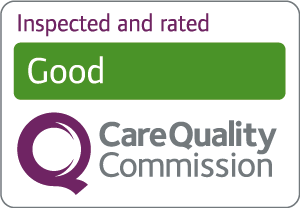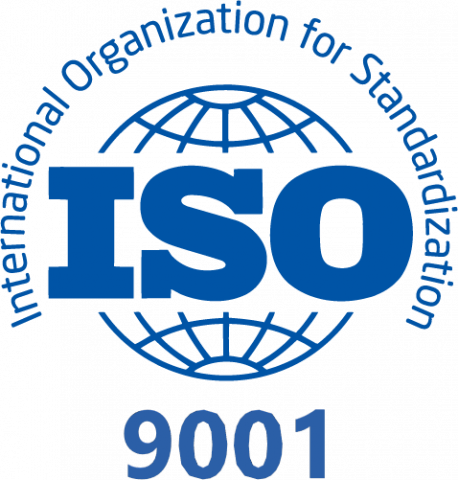
This Psoriasis Awareness Week, we would like to raise awareness and increase understanding of this common, chronic condition affecting millions of people worldwide and to look more closely at its links to Psoriatic Arthritis. In this thorough and informative article, Consultant Dermatologist Dr Archana Rao and Consultant Rheumatologist Dr Dobrina Hull share their knowledge, as well as their expertise from running a specialist joint Rheumatology / Dermatology clinic on skin features of psoriasis, warning signs of psoriatic arthritis, risk factors, and the systemic associations to be aware of.
Psoriasis: More than Skin Deep
Psoriasis is often thought of as a skin disease, but it is much more than that. Up to 1 in 3 people with psoriasis may develop psoriatic arthritis (PsA), a type of inflammatory arthritis closely linked to the condition. PsA can occur at the same time as skin symptoms, especially during active flares, but it can also predate the development of psoriasis or occur years after psoriasis has been inactive. However, most often PsA patients will present with psoriasis by up to 10 years before developing musculoskeletal symptoms.
If left untreated, PsA can lead to progressive joint damage and lasting deformity, making it vital to recognise the signs early and seek specialist assessment. Therefore, if you have been diagnosed with Psoriasis by a Dermatologist, it is highly advisable to be seen by a Rheumatologist, and vice versa, should you present with any specific symptom. With timely diagnosis and tailored treatment, most patients can prevent progression and complications, protect their joints, control symptoms, and maintain a good quality of life.
What Are Psoriasis and Psoriatic Arthritis?
Psoriasis is a chronic, autoimmune condition that predominantly affects the skin, but also has implications on cardiovascular health, the gut, joints, eyes and the metabolic profile of the body. As it is largely visible on the exterior, Psoriasis can also have a considerable negative impact on mental wellbeing and quality of life.
Psoriatic arthritis (PsA) is a related autoimmune joint condition that develops in around a third of people with psoriasis. It causes joint pain, stiffness, and swelling, most commonly in the fingers, toes, lower back, and knees. The condition can progress gradually or flare suddenly, sometimes appearing years after skin symptoms first develop.
“Early recognition and treatment of psoriatic arthritis are crucial to protecting the joints and maintaining long-term mobility. Psoriasis and PsA remind us that these immune-mediated conditions extend beyond the skin, and that effective management relies on close collaboration between Dermatologists and Rheumatologists to support the patient holistically, not just their symptoms.” Dr Dobrina Hull, MA (Oxon), BMBCh, FRCP, PhD, Consultant Rheumatologist at New Victoria Hospital
How Common Are They?
Globally, psoriasis affects about 2–3 % of the population, corresponding to over 125 million people worldwide and 1.3 million in the UK. The prevalence is similar between men and women for both diseases – around 2.8 % vs 3.2 % for psoriasis and closer to 50/50 for PsA, although some studies indicate that notable differences can be experienced between the sexes.
As more people live longer and rates of obesity continue to rise – a factor closely linked to both – the overall impact of these conditions is likely to remain significant.
PSORIASIS
Common Skin Manifestations of Psoriasis
In most cases, psoriasis is identified as a skin disease, as this is often the first form of presentation. It presents as a red scaly rash affecting predominantly the extensor surfaces of the body (elbows, knees, back) but can occur also or exclusively on the scalp, genital area and nails. Severe nail disease can make day to day activities difficult to execute and usually tends to predispose towards psoriatic arthritis.
Other Health Conditions Linked to Psoriasis
Psoriasis is more than just a skin condition. It is a systemic inflammatory disease, which means that it can be associated with and increase the risk of other health issues, including:
- Metabolic syndrome: High blood pressure, high cholesterol, diabetes, fatty liver changes
- Cardiovascular disease: Higher risk of heart attack and stroke.
- Obesity: Inflammation and lifestyle challenges can contribute.
- Depression and anxiety: The visible nature of psoriasis and chronic discomfort can affect mental health.
- Inflammatory bowel disease (IBD): Conditions like Crohn’s disease and Ulcerative Colitis occur more often in people with psoriasis.
- Gout: People with psoriasis are at increased risk of developing gout.
Management of Psoriasis
Skin treatments have evolved over time from messy coal tar potions to present day refined biologic therapy.
- For limited skin disease, topical preparations containing steroids and Vitamin D formulations are prescribed, especially by primary care physicians, to keep the inflammation under control.
- Shampoos containing coal tar and salicylic acid are used to soften the dense scales that often affect the scalp.
- Light therapy, also known as phototherapy, is a proven treatment for psoriasis and works in a similar way to natural sunlight, as evidenced by most patients who return from a sunny holiday with clearer skin. However, as the treatment typically requires about three sessions a week for 8 to 10 weeks, it can often dampen enthusiasm for this form of treatment.
- Tablets range from Methotrexate, Acitretin to faster-acting drugs like Ciclosporin. The latter is especially useful when fast results are required in severe disease. Oral medications are not without side effects and are best discussed with your physician to see what suits you best. Blood tests are often undertaken, and some therapies might require lifestyleadjustments like decreasing alcohol intake (which is good for psoriasis per se), monitoring blood pressure, and being careful in sunny climates due to photosensitivity.
- Biologic therapy has been life-changing for many patients who are suitable candidates. These are injections given at intervals ranging from fortnightly to 3 monthly, and patients often have clear skin, enabling them to continue work and daily activities without inhibition. As biologics cause immunosuppression (dampen the body’s natural defence system) and are lifelong, they are suggested by your physician, bearing in mind your overall health and suitability for treatment.
PSORIATIC ARTHRITIS (PsA)
Signs and Symptoms of Psoriatic Arthritis
- Joint pain, swelling, or stiffness (often in the fingers, toes, or lower back).
- Dactylitis – swollen “sausage-like” fingers or toes.
- Morning stiffness in the joints or back that typically lasts >30 minutes and improves with movement.
- Changes in the nails (pitting, ridges, crumbling, or lifting).
- Symptoms of or previous history of recurrent tendinitis e.g. tennis elbow, Achilles tendinitis, plantar fasciitis.
If you have psoriasis and notice any of these symptoms, it is important to let your GP know or see a Consultant Rheumatologist as soon as possible. Joint changes may become irreversible, so early diagnosis is crucial.
Treatment Options for Psoriatic Arthritis
There are many different treatment options for PsA, new treatments and a collaborative care model between dermatologists and rheumatologists is improving outcomes like never before.
1. NSAIDs (Nonsteroidal Anti-Inflammatory Drugs)
These medications, like ibuprofen or naproxen, can help reduce pain and swelling in the cases of milder symptoms.
2. Traditional DMARDs (Disease-Modifying Antirheumatic Drugs)
Drugs such as methotrexate, sulfasalazine, or leflunomide may help slow disease progression and reduce inflammation affecting joints and skin.
3. Biologic Therapies
These targeted medications focus on specific parts of the immune system. Common types include:
- TNF inhibitors
- IL-17 inhibitors
- IL-23 inhibitors
Biologics can treat both joint pain and skin symptoms and are often used when other treatments are not effective enough.
4. Targeted Oral Medications (Small-Molecule Inhibitors)
JAK inhibitors and PDE4 inhibitors (such as apremilast) offer another option for reducing inflammation and improving symptoms.
Risk Factors for Developing Psoriatic Arthritis in Psoriasis Patients
Dermatologists and Rheumatologists often look for early warning signs of PsA in psoriasis patients. Not everyone with psoriasis will develop PsA, but certain factors may increase the risk:
- Family history: Having relatives with psoriasis or arthritis.
- Severe or widespread psoriasis: Especially if the nails, scalp or genital areas are affected.
- Scalp psoriasis: People with scalp psoriasis are up to 4 times more likely to develop PsA.
- Duration of psoriasis: People who have had psoriasis for a long time are at increased risk of developing PsA; the lag time from the onset of psoriasis to PsA diagnosis is approximately 7–12 years.
- Age: PsA most often develops between ages 30–50.
- Obesity and lifestyle factors: Extra weight and smoking can increase the risk.
- Immune system changes or infections: These can sometimes trigger PsA symptoms.
Tips for Managing Skin and Joint Health
Although psoriasis and psoriatic arthritis are lifelong conditions, there are many ways to manage your symptoms and help your wellbeing:
- Follow your treatment plan for both skin and joint symptoms, whether topical creams, light therapy, or medications.
- Ask about newer treatments targeting both skin and systemic inflammation (biologics, small molecules).
- Be proactive and your own advocate: report any new joint pain, swelling, stiffness, skin or nail changes promptly, and attend regular reviews to monitor disease activity, treatment effectiveness and overall health.
- For people with psoriasis, routinescreening for joint symptoms (pain, stiffness, swelling), nail involvement, and cardiovascular/metabolic risk factors is recommended. Dermatologists, Rheumatologists and general practitioners should maintain a high index of suspicion for psoriatic arthritis, especially in patients with risk features.
- Maintain a healthy weight, balanced diet and active lifestyle.
- Avoid smoking and limit alcohol to reduce your risk of flares and long-term health complications.
- Get regular check-ups for blood pressure, cholesterol, and blood sugar, as both conditions increase cardiovascular and metabolic risks.
- Manage stress, which can trigger flare-ups.
Why It Matters: Early Detection & Integrated Management
- Preventing irreversible joint damage: Since PsA can cause erosion and deformity, early diagnosis and prompt treatment can preserve function.
- Reducing cardiovascular and metabolic risk: By screening and managing hypertension, diabetes, lipids, and weight, we can lower the risk of heart attacks and stroke.
- Improving quality of life: Recognising psychosocial impacts and addressing mental health helps overall well-being.
- Treatment tailoring: Some newer therapies (e.g. biologics, small molecules) have dual benefits (skin + joints + systemic inflammation).
Why a Team Approach Works Best
Because psoriatic arthritis affects both skin and joints, having coordinated care from Dermatology and Rheumatology Consultants can make a significant difference to your long-term health and comfort. Dermatologists focus on calming inflammation, managing skin flares, and maintaining healthy skin, while Rheumatologists specialise in protecting the joints, preventing damage, and reducing pain and stiffness.
“Psoriasis is not just a skin condition – it can affect many aspects of a person’s daily life. By working closely with Rheumatology colleagues, we can provide integrated care, with treatment plans tailored to address both skin and joint symptoms more effectively and simultaneously. Our coordinated approach allows earlier recognition of joint involvement and ensures that treatment is adjusted precisely to each patient’s needs.” Dr Archana Rao, MBBS, DVD, FCPS, DNB, FRCP, Consultant Dermatologist at New Victoria Hospital
Sharing your symptoms, asking questions, and following up regularly can help your care team make the best decisions for you. These conditions are manageable, and with early diagnosis, effective treatment plan a coordinated care team, and healthy lifestyle choices, you can take control of your health, live a full and active life, and feel better long term.
If you notice changes in your skin or joints, don’t wait – early attention can prevent long-term problems. To book an appointment with our Consultant Dermatologistsand Rheumatologists, please call us on 020 8949 9020 or complete our online form.












